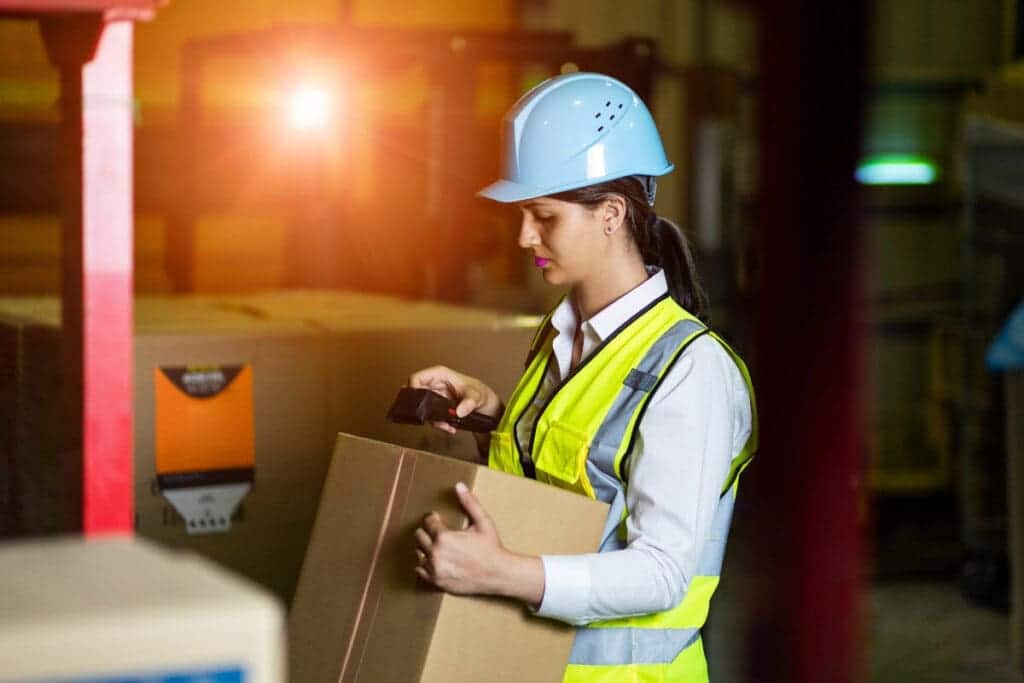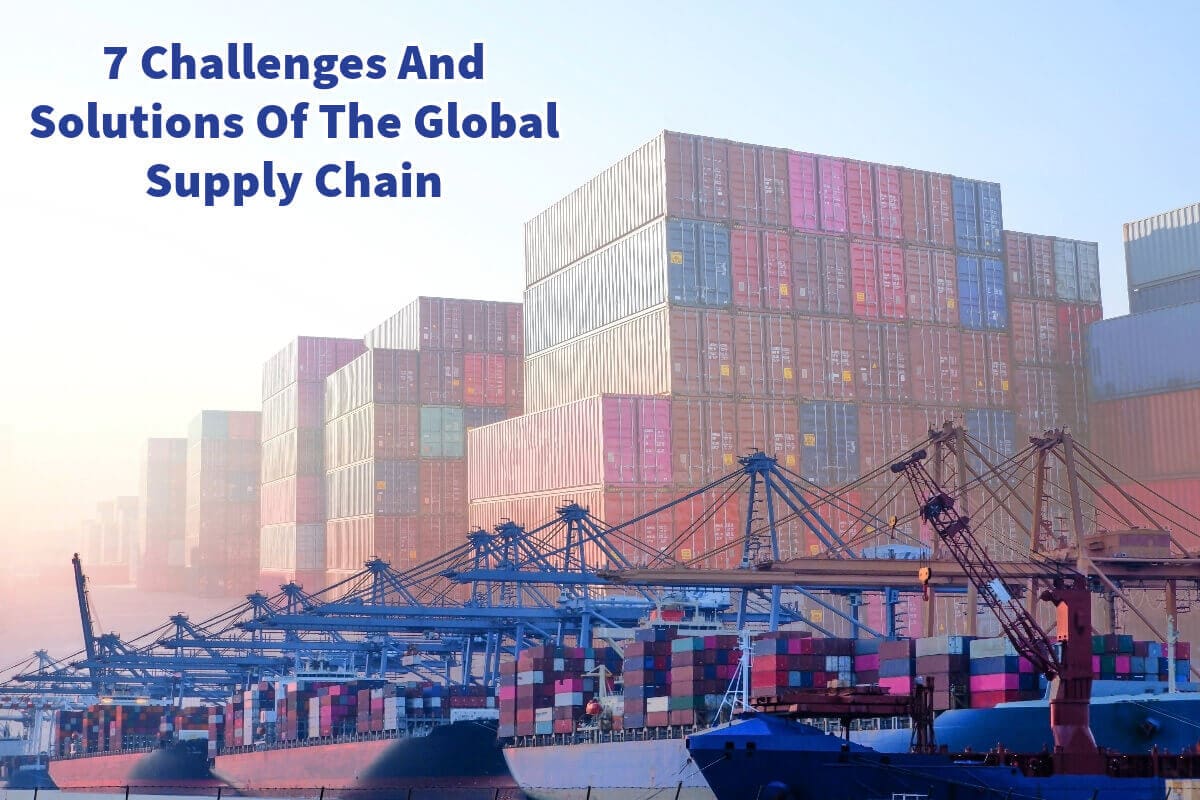Supply chains operate in a more interconnected world than ever, offering companies unprecedented opportunities for expanding their business horizons.
But with the global supply chain, there are also a host of challenges that can also occur. These challenges can happen on both sides of the supply chain. Read on as we explore seven of the most pertinent global supply chain management challenges and provide solutions to help businesses navigate these turbulent waters.
Table of Contents
- 7 Challenges Of The Global Supply Chain And Solutions To Overcome Them
- The Indispensable Nature of the Global Supply Chain
- Related Content
7 Challenges Of The Global Supply Chain And Solutions To Overcome Them
In an age defined by globalization, companies can access markets thousands of miles away, offering products manufactured from diverse corners of the world. However, the vast expanse of the global supply chain, while promising untapped potential, also brings unique challenges.
With every advantage comes an inherent risk. Yet, for every problem, there’s always a solution waiting to be discovered. Read on as we delve deep into seven primary challenges the global supply chain faces and unearth viable solutions to navigate this intricate network effectively.
Business Environment
The business environment is one of the critical challenges of today’s global supply chain.

Business Environment Challenge:
Economic downturns, looming trade wars, and unforeseen health crises – the global business environment is riddled with uncertainties. These unpredictabilities can wreak havoc on the smooth functioning of the supply chain, often catching businesses off guard.
Business Environment Solution:
The antidote to uncertainty is resilience. Companies must invest in creating flexible supply chain models. This entails regular scenario-based planning, comprehensive risk assessments, and strategic diversification across various geographies and sources. In essence, never put all your eggs in one basket.
Single-Sourcing
Single sourcing can be a challenge for a company. This single sourcing can also include sourcing our goods and services from only one location or country.

Single Sourcing Challenge:
Imagine building a house on a single pillar. It might stand tall for a while, but any damage to that pillar would bring the entire structure crashing down. This is the inherent risk in single-sourcing.
Many companies with only production in China see this as a risk. So, single sourcing can include having all your production in one country. This risk is if government policies suddenly change, it can be challenging for you to remain competitive.
When the US Trump presidency put tariffs and duties on China, many companies realized this single-country sourcing was a massive risk.
Single Sourcing Solution:
Diversity is the way forward. Companies should consider branching out and establishing connections with multiple suppliers and locations. Not only does this reduce dependency, but it also introduces healthy competition among suppliers and even other countries, leading to better prices and improved quality
Rising Costs
Another challenge many face in the global supply chain is the rising production and shipping costs.

Rising Costs Challenge:
Whether it’s the surging oil prices, the increasing labor wages, or the ever-mounting transit fees, rising costs are a perpetual concern for businesses operating in the global landscape.
Rising Costs Solution:
The key lies in optimization. Lean management principles, just-in-time inventory methods, and a strategic partnership can help mitigate these rising costs. Additionally, embracing technological advancements, like automation and artificial intelligence, can enhance operational efficiency.
Lack Of Data And Insights
A company’s lack of data and insights can also be a massive challenge to make the correct decisions.

Lack Of Data And Insights Challenge:
Data is the guiding star in the vast global supply chain management sea. However, many businesses are sailing blind, devoid of critical insights that can shape their strategy.
Lack Of Data And Insights Solution:
Modern problems require modern solutions. Investing in state-of-the-art analytics tools, integrated supply chain management software, and cloud solutions can give businesses a bird’s eye view of their operations. These insights can be pivotal in making informed, proactive decisions.
A company needs to fully understand what they are buying and what is selling for them to be able to make the right decisions. Too much or too little stock can hurt a company.
Compliance With International Regulation
In our ever-changing world, understanding all the international regulations continues to be complicated.

Compliance With International Regulation Challenge:
The global arena is a tapestry of diverse regulations. From quality checks to customs duties, navigating this intricate web can be arduous.
Compliance With International Regulation Solution:
Knowledge and collaboration are the pillars here. Regular workshops, consultations with local experts, and maintaining a centralized regulation database can equip businesses to handle international compliance seamlessly.
Finding Reliable Business Partners
One of the critical aspects of global trade is finding business partners you can rely on. This can go on both sides of the global supply chain in that buyers and sellers must find reliable partners.

Finding Reliable Business Partners Challenge:
A chain is only as strong as its weakest link. In the global supply chain, these links are the business partners. Finding reliable ones is a significant challenge.
Finding Reliable Business Partners Solution:
Due diligence is the first step. Before establishing ties, businesses should thoroughly vet potential partners. Trade fairs, industry conferences, and companies like Mondoro, especially for those eyeing the home decor and furnishing market, can be goldmines for forging trustworthy partnerships.
Product Knowledge
Understanding the products you are importing and what it means for the import and quality regulations is essential.

Product Knowledge Challenge:
Diving into global markets without comprehensive product knowledge can be a recipe for disaster. Companies risk procuring substandard products, leading to reputational damage and financial losses.
Product Knowledge Solution:
Education is paramount. Regular training, on-site visits to suppliers, and collaborations with product experts can give purchasing teams the knowledge they need to make informed buying decisions.
With its vastness and complexity, the global supply chain is akin to a double-edged sword. While the opportunities it presents are boundless, the challenges are equally daunting.
However, with strategic foresight, technological adoption, and continuous learning, businesses can not only overcome these challenges but also harness the power of the global supply chain to soar to new heights.
The Indispensable Nature of the Global Supply Chain
In today’s interconnected world, the global supply chain isn’t just a logistical marvel; it’s the beating heart of modern commerce and a linchpin for sustaining our lifestyles.
Here’s a deeper dive into why the global supply chain is so crucial:
- Facilitating Global Trade: At its core, the global supply chain enables the movement of goods and services across continents. From the coffee beans harvested in South America to the electronics assembled in Asia, it ensures products reach markets thousands of miles away, fostering international trade.
- Economic Growth and Development: The global supply chain contributes significantly to the GDP of nations. By creating jobs, fostering business opportunities, and enhancing exports, it acts as a catalyst for economic prosperity.
- Consumer Benefits: The global supply chain translates into many choices for consumers. Be it apparel, gadgets, or cuisines, people today have access to a diverse range of products from across the globe, often at competitive prices.
- Innovation and Competitive Advantage: With global supply chains, businesses can tap into international talent pools, best practices, and technologies. This facilitates innovation and helps companies gain a competitive edge in the marketplace.
- Risk Diversification: By sourcing materials and products from various regions, businesses can diversify their risk. For instance, if a natural disaster disrupts production in one region, the supply chain can be adjusted to compensate for that disruption elsewhere.
- Optimized Production Costs: The global supply chain allows businesses to produce goods in regions where the cost of production is lower, leading to economies of scale and ultimately benefiting the end consumer through cost-effective pricing.
- Enhanced Collaboration: As businesses work with international partners, suppliers, and customers, there’s an improved emphasis on collaboration. This fosters mutual growth, understanding, and shared goals, bridging gaps between cultures and markets.
- Adaptability and Flexibility: Given the dynamism of global events, from political upheavals to pandemics, a well-oiled global supply chain allows for adaptability. Companies can recalibrate their strategies based on shifting global scenarios.
- Sustainability Initiatives: Many companies are now leveraging their global supply chains to implement sustainability measures. By choosing eco-friendly suppliers or optimizing transportation for reduced emissions, the supply chain becomes a tool for environmental responsibility.
- Strengthening Diplomatic Ties: On a macro level, interconnected supply chains often lead to stronger diplomatic relations between countries. As nations become economically co-dependent, there’s a mutual interest in ensuring stability and harmony.
The global supply chain is not just a mechanism for moving goods. It’s a complex ecosystem that touches every facet of our lives, from the economy and job market to the choices available at our local stores. Recognizing its significance is the first step towards appreciating the intricate dance of global commerce.
If you are interested in seeing how Mondoro can help you with your supply chain – we would love to talk to you about how we can help you and be part of your global supply chain.
Find out more about how Mondoro can help you create, develop, and manufacture excellent home decor and home furniture products – don’t hesitate to contact me, Anita. Check out my email by clicking here or become a part of our community and join our newsletter by clicking here.
Mondoro gives out a FREE Lookbook to anyone interested. You can receive a copy of our latest Lookbook by clicking here.
Listen to our Podcast called Global Trade Gal. You can find it on all major podcast platforms. Try out to listen to one of our podcasts by clicking here.
Subscribe to our Mondoro Company Limited YouTube Channel with great videos and information by clicking here.
Related Content
What Is The Difference Between Supply Chain Management and Logistics?
Supply chain management is about the collaboration and partnerships to get the goods from raw materials to the end consumer; it is about the partnerships and collaborations within this supply chain process. Logistics is one part of supply chain management; logistics is about moving goods from one place to another. Sometimes, the logistics providers will also store the goods and send them to the end consumer.
You can learn more by reading our blog What Is The Difference Between Supply Chain Management and Logistics? by clicking here.
What Are Some Reasons to Look Towards Manufacturing Your Products in Vietnam?
With the tariffs that countries like the United States have placed on China, Vietnam is one country that has become a clear winner in the trade war. One reason is that Vietnam has a relatively large, young, educated, and skilled population. The Vietnamese Government is also business-friendly, and the country continues to develop many excellent shipping ports.
To find out more, you can read 8 Reasons to Look Towards Manufacturing Your Products in Vietnam by clicking here.
Why Should You Understand the Culture of Your Product Sourcing Country?
It is essential to understand the culture of the country you are sourcing and purchasing your products from. Things you can do are: 1) check a map, 2) do your homework about the place you are buying from, 3) show a genuine interest in the country and culture, 4) try to learn a few basic words of the local language, 5) see a few of the cultural sites, 6) be adventurous in trying new foods, 7) ask intelligent questions about the country and 8) find topics of conversation that will reach out across the cultural divide.
You can find out more by reading 8 Tips to Understand the Culture of Your Product Sourcing Country by clicking here.

